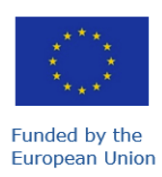Quantum Glass-based Photonic Integrated Circuits (QLASS)

QLASS brings together experts from top research groups, up-and-coming SMEs, and industry to achieve the ambitious goal of producing a quantum photonic integrated circuit (QPIC) utilizing the extremely versatile technique of femtosecond laser writing (FLW) to fabricate 3D waveguides within glass developed for optimum photonic performance to support an unprecedented 200 reconfigurable optical modes.
Compared to other QPIC techniques, glass yields extremely small interface losses (<5%) – ideal for modular, scalable architectures connecting multiple chips – with speed, affordability, and optimization for end-user goals. Incorporating high-performance single-photon sources, superconducting nanowire single-photon detectors, and electronics enabling reconfigurable state manipulation via control of an exceptionally large number of cryogenic-detector channels (200) and phase shifters (1000), we will create an end-to-end quantum photonics platform. We will implement Variational Quantum Algorithms (VQAs), leading candidates for near-term advantage, for which our platform is ideally suited. We will develop software for end users to translate their VQAs into FLW circuits, with error mitigation to enhance QPIC performance.
Our principal use case is solving problems in the design of lithium-ion batteries to achieve improvements in capacity and efficiency crucial for attaining EU technological and sustainability goals. QLASS will attain substantial advancement both towards the specific QPIC objectives as well as glass development, with associated novel SNSPD processes, benefitting the wider community and enabling new quantum devices with performance far exceeding other platforms. Our combination of world-class experimentalists and theorists have the complementary expertise to successfully carry out the ambitious project objectives advancing practical QPICs.


